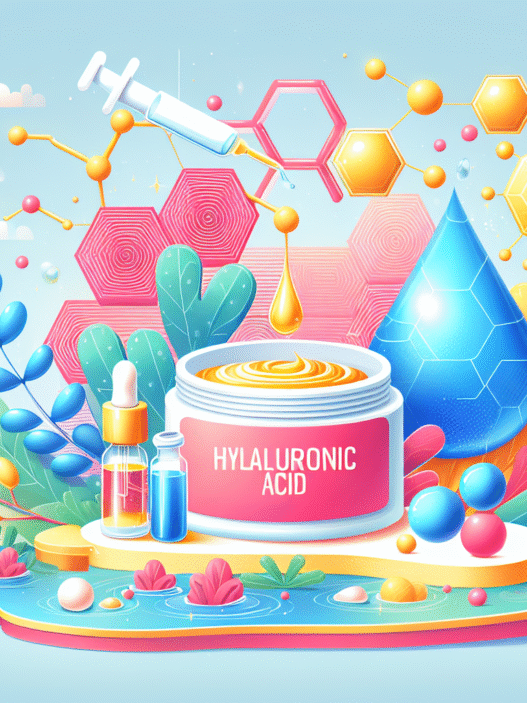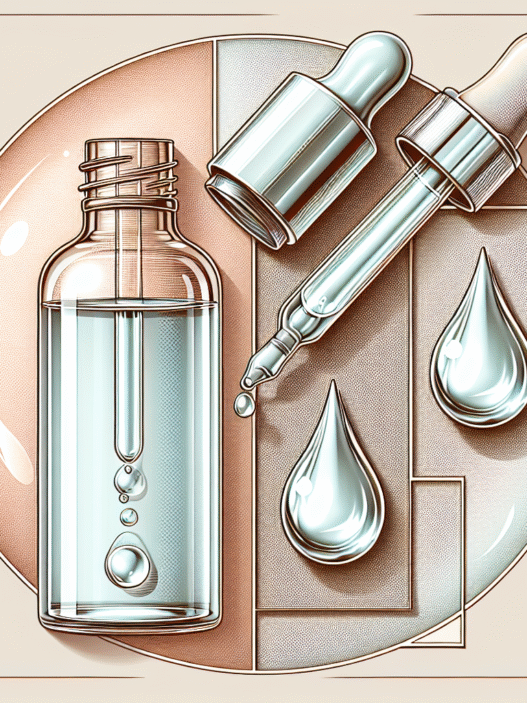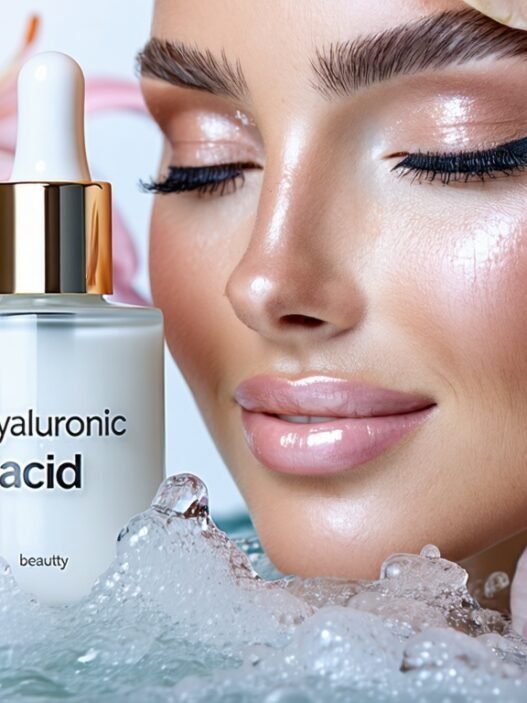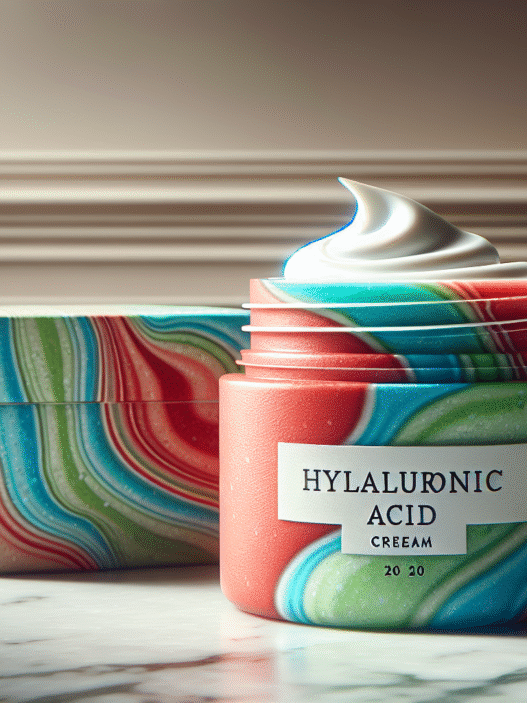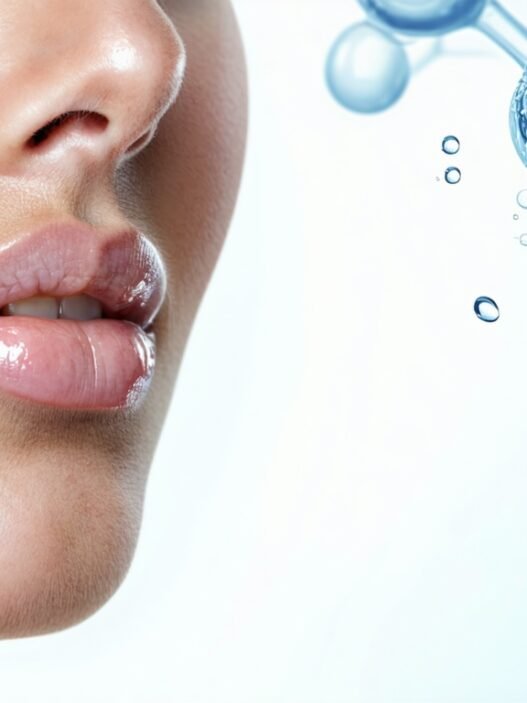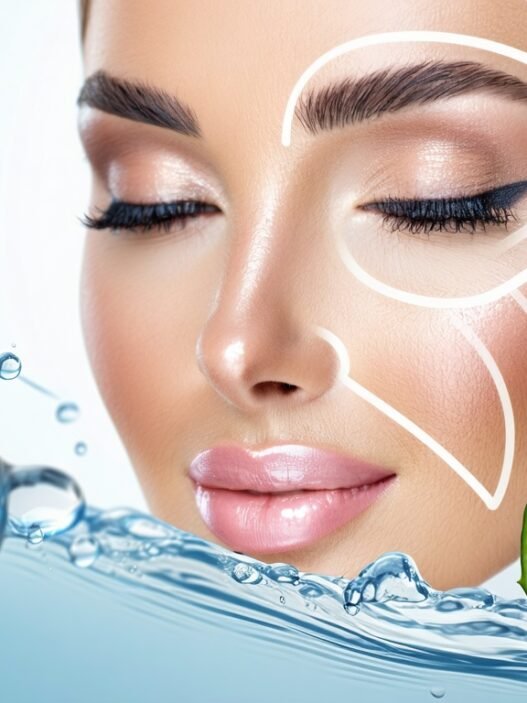Understanding Hyaluronic Acid
Natural Occurrence of Hyaluronic Acid
Hyaluronic acid is a naturally occurring substance in the body, primarily found in the skin, eyes, and joints. Its presence in these areas illustrates its crucial role in maintaining hydration and overall health. According to the Cleveland Clinic, hyaluronic acid contributes significantly to the moisture levels in the body, making it essential for proper eye function and joint lubrication.
Benefits of Hyaluronic Acid Usage
Hyaluronic acid offers numerous advantages for skincare and overall health. As a powerful humectant, it has the ability to absorb and hold large amounts of water—up to 1000 times its weight. This super-hydrating property is particularly beneficial for maintaining skin moisture and elasticity. The human body contains approximately 15g of hyaluronic acid, with one-third of it residing in the skin. Remarkably, just 1g of hyaluronic acid can absorb an impressive six liters of water (Dermstore).
Hyaluronic acid is available in various formulations with different molecular weights, which influences its effectiveness in skincare products. Different sizes affect how well the acid can penetrate the skin barrier, impacting hydration and wrinkle reduction (NCBI). Its ability to enhance moisture retention and support skin elasticity makes it an excellent choice in many anti-aging skincare routines. Furthermore, by modulating cellular immunity and regulating cell interactions, hyaluronic acid plays a versatile role in skin health.
Beauty and skincare enthusiasts may find that incorporating products like hyaluronic acid serums or hyaluronic acid moisturizers into their daily routines enhances their skin’s hydration and firmness. The benefits extend beyond just facial applications, as hyaluronic acid is also relevant for maintaining healthy joints and may have implications in treatments such as hyaluronic acid injections for joint pain relief.
Hyaluronic Acid for Skincare
Hyaluronic acid has become a staple in skincare regimens, particularly for its powerful moisturizing properties. Understanding its contributions to hydration and elasticity, as well as the various formulations available, is useful for beauty and skincare enthusiasts.
Hydration and Elasticity
Hyaluronic acid is renowned for its ability to hold about one and a half gallons of water, making it the premier polymer for moisture absorption (Cleveland Clinic). This property makes it a critical ingredient in moisturizing products. The ability to attract and retain moisture enhances skin hydration, which is essential for maintaining skin elasticity and reducing fine lines and wrinkles.
Studies indicate that topical hyaluronic acid serum can lead to an immediate increase in skin hydration by as much as 134% after application. At week 6, users reported sustained increases in hydration (63%), smoothness (64%), and plumping (60%). As the delicate skin around the eyes is especially prone to aging, incorporating hyaluronic acid into eye care products can be particularly beneficial for improving elasticity and overall skin texture (Dermstore).
Types of Hyaluronic Acid Formulations
Hyaluronic acid comes in various formulations, each tailored to meet specific skincare needs. Understanding the differences between these formulations can aid individuals in choosing the right products.
| Formulation Type | Molecular Weight | Benefits |
|---|---|---|
| High Molecular Weight | Larger molecules | Primarily provides surface hydration; helps smooth fine lines and wrinkles. |
| Low Molecular Weight | Smaller molecules | Penetrates deeper into the skin, offering hydration where it is needed most; improves skin plumpness. |
| Mixed Molecular Weight | Combination of both | Provides both surface and deeper hydration, maximizing anti-aging effects. |
Creams formulated with varying molecular weights of hyaluronic acid can target different concerns. Smaller molecules are beneficial for hydrating the delicate under-eye area, while larger molecules tend to smooth the appearance of fine lines and wrinkles (Dermstore). For those interested in maximizing their skincare routine, opting for a hyaluronic acid serum or hyaluronic acid moisturizer can enhance overall skin hydration and contribute to a youthful appearance.
Using hyaluronic acid should be part of a balanced skincare regimen that may also include hyaluronic acid injections for those seeking immediate results, as well as incorporating other products like hyaluronic acid cream and hyaluronic acid supplements for internal benefits. Understanding these formulations and their respective benefits is crucial for optimal results in maintaining hydration and elasticity in the skin.
Hyaluronic Acid for Eyes
Hyaluronic acid is becoming increasingly recognized for its benefits specifically related to eye care. This versatile ingredient serves multiple functions in maintaining eye health and addressing common concerns associated with aging skin.
Eye Health Benefits
Hyaluronic acid boasts several eye health advantages. Its anti-inflammatory properties help reduce redness and swelling around the eye area (TheraTears). This is particularly beneficial for individuals who experience dryness or irritation. The skin around the eyes is delicate and prone to early aging signs, making the hydration provided by hyaluronic acid crucial in preserving its health.
Moreover, studies indicate that hyaluronic acid in eye creams can boost collagen production, further enhancing hydration for periorbital skin concerns. When combined with other active ingredients such as retinoids and peptides, the results may be even more pronounced.
Additionally, hyaluronic acid eye drops are safe and effective for both children and young adults in treating dry eyes, providing a soothing remedy for discomfort (TheraTears). During pregnancy, hyaluronic acid eye drops are also considered safe, as research shows no link to neonatal issues.
Using Hyaluronic Acid Eye Drops
Hyaluronic acid eye drops are formulated to hydrate and relieve dryness. The drops work by drawing moisture to the surface of the eye, ensuring a sustained level of hydration. This is especially useful for people who spend long hours in front of screens or suffer from environmental irritants.
When looking for effective hyaluronic acid eye drops, it is advisable to check for the concentration of hyaluronic acid, as this will influence the drops’ effectiveness. Below is a comparison table showcasing common concentrations found in eye drop formulations:
| Brand | Hyaluronic Acid Concentration (%) | Additional Ingredients |
|---|---|---|
| TheraTears | 0.15 | Electrolytes |
| Systane Balance | 0.20 | Buffered saline solution |
| Optive Fusion | 0.15 | Glycerin |
Always consult product labels to understand the ingredients and choose the most suitable option for individual needs. For those who wish to combine their hydration routine with other benefits, considering a hyaluronic acid serum or cream may enhance overall skin health as well. More information can be found in our article on hyaluronic acid serum.
Incorporating hyaluronic acid into the skincare and eye care regimen not only improves hydration but also supports overall skin health, making it a valuable component for beauty and skincare enthusiasts focused on maintaining youthful, vibrant skin around their eyes.
Hyaluronic Acid Products
The market offers various products that incorporate hyaluronic acid, allowing individuals to choose options that best suit their needs. Two main categories of hyaluronic acid products include over-the-counter options and professional administration of injections.
Over-the-Counter Options
Over-the-counter products featuring hyaluronic acid are widely available and cater to various skincare needs. These products include serums, creams, moisturizers, and eye drops designed to hydrate and rejuvenate the skin. Popular over-the-counter options include:
| Product Type | Example | Key Features |
|---|---|---|
| Hyaluronic Acid Serum | Hyaluronic Acid Serum | Concentrated formula for deep hydration |
| Hyaluronic Acid Moisturizer | Hyaluronic Acid Moisturizer | Locks in moisture and improves elasticity |
| Hyaluronic Acid Eye Drops | TheraTears® Screen Eyes Eye Drops | 0.1% hyaluronic acid for dry eye relief |
Hyaluronic acid eye drops, such as TheraTears® Screen Eyes, utilize 0.1% hyaluronic acid to replenish moisture and relieve eye strain caused by excessive screen usage (TheraTears). These products are considered safe and effective for treating dry eyes in children and young adults.
Professional Administration of Injections
For more intensive treatment, professional administration of hyaluronic acid injections is available. These injections deliver a higher concentration of hyaluronic acid directly into the skin, enhancing hydration and elasticity. It is crucial to have these treatments performed by trained medical professionals to avoid severe complications or adverse effects. The injections are particularly beneficial for individuals looking to address deeper wrinkles or loss of volume in specific areas.
Injectable forms of hyaluronic acid target various skin concerns by utilizing different molecular weights, which can affect skin penetration and hydration results (NCBI). Common injections include those aimed at restoring volume to the cheeks or smoothing out nasolabial folds.
Choosing between over-the-counter products and professional treatments depends on individual skincare goals and needs. It is often recommended to consult with a skincare professional to determine the most effective approach for incorporating hyaluronic acid into a skincare routine. For additional insights on hyaluronic acid applications, check treatments for hyaluronic acid and wrinkles or hyaluronic acid for skin.
Best Practices for Hyaluronic Acid
Hyaluronic acid is a powerful ingredient in skincare, especially for its anti-aging properties. To maximize its benefits, it’s essential to use it correctly and understand its concentrations.
Proper Application Techniques
Applying hyaluronic acid effectively enhances its hydrating and anti-aging properties. Here are some best practices for application:
- Start with Damp Skin: Applying hyaluronic acid to slightly damp skin can enhance its moisture-retaining abilities. The ingredient attracts water, ensuring deeper hydration.
- Layering Technique: For best results, layer the hyaluronic acid product with other moisturizers or serums. This helps lock in moisture.
- Twice Daily Application: Incorporating hyaluronic acid into the morning and evening skincare routines can maximize hydration benefits.
- Combine with Hydrating Ingredients: Combining hyaluronic acid with ingredients like glycerin can bolster hydration and improve skin texture.
| Technique | Description |
|---|---|
| Damp Skin | Apply on slightly damp skin to enhance moisture absorption. |
| Layering | Follow with additional products to lock in moisture. |
| Twice Daily | Use both morning and evening for optimal results. |
| Combine Ingredients | Mix with other hydrating agents for improved efficacy. |
Hyaluronic Acid Concentrations
Understanding the concentration of hyaluronic acid is crucial for achieving desired results. Dermatologists typically recommend using a concentration between 0.5% and 2%. Higher concentrations should only be used under professional guidance.
| Concentration | Description |
|---|---|
| 0.5% – 2% | Recommended range for general use; effectively hydrates without irritation. |
| Higher than 2% | Consult a dermatologist, as higher concentrations can lead to sensitivity. |
The molecular weight of hyaluronic acid also plays a significant role. Smaller molecules penetrate deeper into the skin, providing intensive hydration, while larger molecules mainly target the surface, smoothing fine lines and wrinkles (Health). Products formulated specifically for the eye area often include varying molecular weights to cater to the delicate skin beneath the eyes.
By following these application techniques and understanding concentration levels, individuals can effectively incorporate hyaluronic acid for eyes into their skincare routine for optimal hydration and anti-aging benefits.
Results and Recommendations
Effects on Skin Texture and Firmness
Using hyaluronic acid for the under-eye area has shown significant benefits in improving skin texture and firmness. This powerful ingredient can hold up to 1000 times its weight in water, providing intense hydration to the skin (Dermstore). As a result, the skin appears plumper and smoother, reducing the visibility of fine lines and wrinkles.
Regular use of hyaluronic acid can enhance elasticity, thereby rejuvenating the under-eye area and contributing to a more youthful appearance. Combining hyaluronic acid with other beneficial ingredients, like vitamin K and antioxidants, can further improve skin texture by stimulating collagen production and improving circulation, which helps alleviate issues like dark circles and puffiness (Clinikally).
| Effect | Description |
|---|---|
| Hydration | Intensively hydrates, leading to plumper skin. |
| Fine Lines Reduction | Reduces appearance of fine lines through enhanced hydration. |
| Elasticity Improvement | Supports skin elasticity, resulting in firmer skin. |
Skincare Regimen Incorporation
Incorporating hyaluronic acid into a daily skincare regimen can be straightforward and effective. It is typically advised to apply a hyaluronic acid serum before heavier moisturizers or creams. This step ensures that the skin absorbs the maximum amount of hydration. Users should consider applying their hyaluronic acid products on slightly damp skin to optimize absorption.
Here are some recommended steps for including hyaluronic acid effectively:
- Cleansing: Start with a gentle cleanser to prepare the skin.
- Toning: Use a hydrating toner to add an extra layer of moisture.
- Serum Application: Apply a hyaluronic acid serum, focusing on the under-eye area.
- Moisturizing: Follow up with a nourishing moisturizer to lock in the hydration.
- Targeted Treatments: Consider additional products like eye creams featuring hyaluronic acid for added benefits.
By seamlessly integrating hyaluronic acid into their skincare routine, individuals can enjoy its full range of benefits. For those looking to explore more about hydrating products, check out our sections on hyaluronic acid moisturizer and hyaluronic acid cream.














